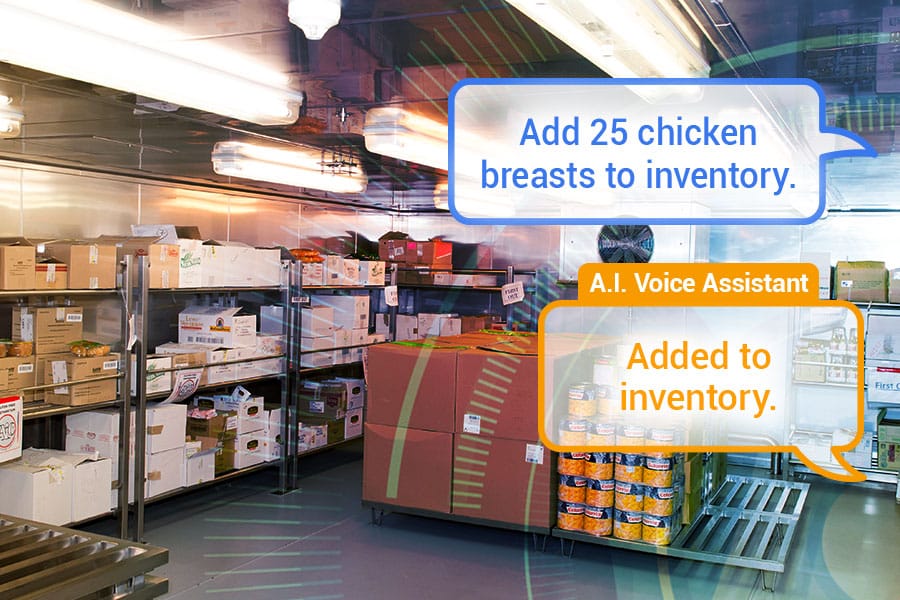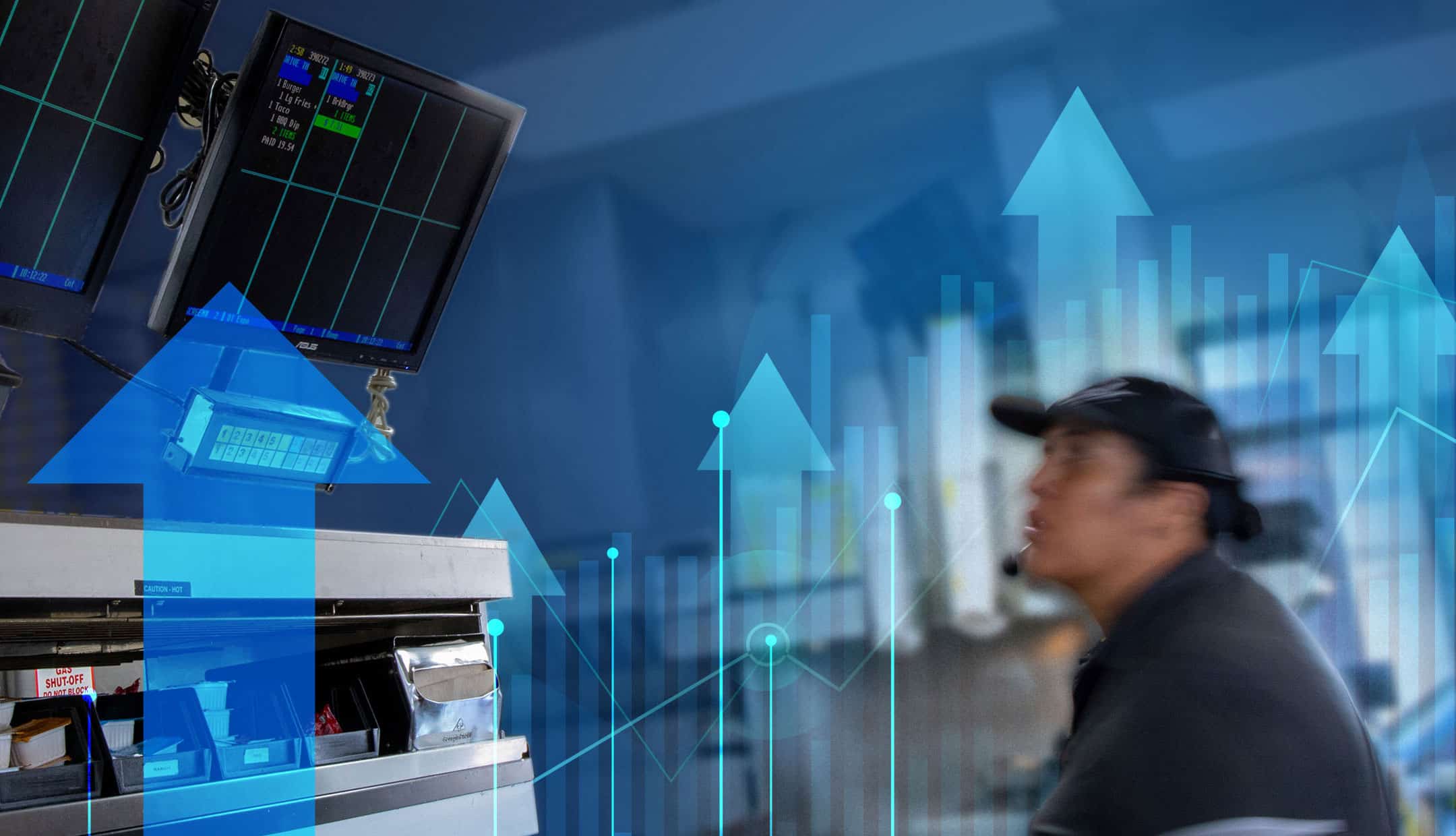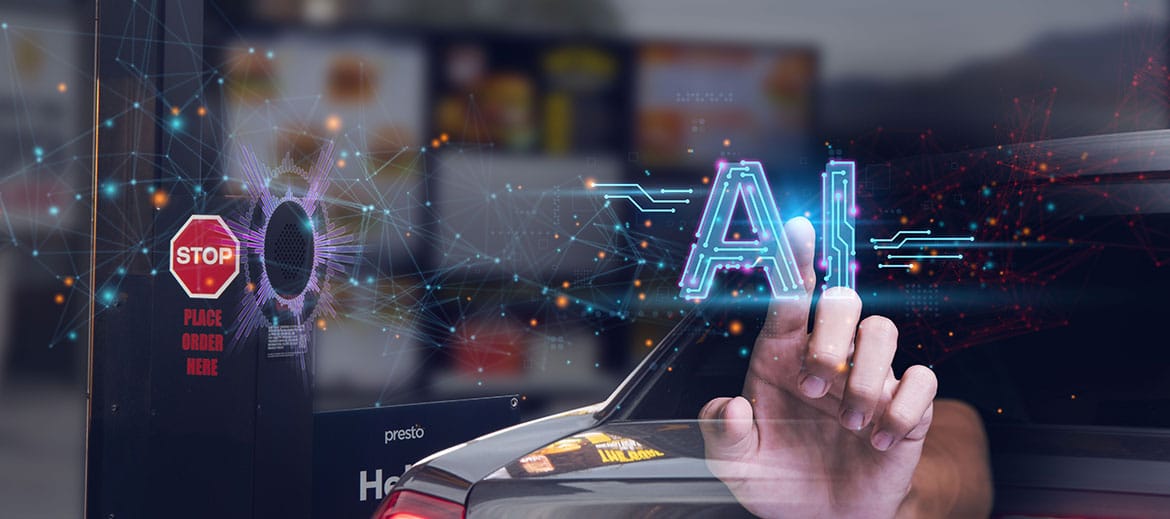Inventory management is fundamental to helping restaurants minimize costs, improve cash flow and boost profitability. What voice automation technology is available today for managing inventory?.
Back in 1989, when Marty McFly in “Back to the Future II” used his voice to select channels on the TV, it was pure science fiction. Fast forward to 2015, Xfinity made it a reality by introducing their voice remote. Since the introduction of Siri in 2011, our living rooms and kitchens have become the test labs of today, as we have all tried and tested A.I. voice assistants thanks to Siri, Alexa and Google. With a simple voice command, they help us check the weather, send a text or find your favorite restaurant.
The power of voice.
There’s no denying that voice is the future. A.I. voice technology is growing at a fast pace and it couldn’t come at a better time for enterprises struggling with labor shortage, inflation, and higher costs. As a result, more businesses are exploring how A.I. voice assistants can help automate mundane workflows, cut costs, improve profits, provide business intelligence and enhance customer experiences.
Disrupting the restaurant industry are forward-thinking quick service restaurants which have already started to adopt A.I. voice platforms to optimize their drive-thru operations for efficiency and upsells. A prime example is Checkers & Rally’s, a medium-sized burger chain, who recently became the first national brand to utilize next-gen voice ordering technology nationwide in their drive-thrus.
Restaurants are the ideal environment for speech recognition. Things move fast in a busy restaurant, the next generation of speech recognition technology will enable faster transactions, improved order accuracy and happier guests—all with less reliance on staff, who have their hands full.
Another application that makes a ton of sense for restaurants is inventory.
Are restaurants wasting food?
Inventory is a massive undertaking for restaurants because they’re essentially operating both a mini warehouse and a manufacturing facility. Without sufficient manpower and the right A.I. technology, restaurants often order too many ingredients for their kitchen which becomes food waste. For restaurants, their inventory is especially complicated because they’re dealing with perishable goods with a short shelf-life. According to the non-profit ReFED, “the restaurant industry generates about 11.4 million tons of food waste annually at a cost of about $25 billion per year”. Restaurants cannot afford to waste food which kills their profit margin.
On the other hand, when a restaurant runs out of a popular menu item, like Popeyes’ chicken sandwich, this can cause major financial setbacks and even worse, really unhappy guests. Automating the inventory management process with next-gen voice technology helps restaurants decrease food waste and loss, increase profits and keep guests happy.
In fact, this is just one successful business case with huge possibilities to cross over to various industries like warehousing, retail, hotels, and the list is endless. Inventory management is a fundamental component to survival and success, helping businesses to minimize costs, improve cash flow and boost profitability.
From pen and paper to voice.
Currently, inventory management relies heavily on pen and paper, and then uploading that data on a computer into a spreadsheet. For many restaurant staff members, this is a time-consuming and error-prone process that occurs a few times a week, when they have to receive deliveries, go into storage rooms, fridges, freezers and cellars to complete the inventory stock control usually done with pen and paper. Then, back in the office, the staff member has to retype all the information into a computer.
This whole process is redundant and could be significantly improved by using voice technology integration; for example, a staff member walking through all these storage areas say out loud what they see while this info is seamlessly entered directly into the POS system through an A.I. voice assistant.
Benefits of implementing voice A.I. assistants for inventory management in restaurants include:
- Less food waste: Real-time and accurate inventory count allows restaurants to buy the right quantity at the right time.
- Better vendor management: Closely track purchases upon delivery.
- Real-time inventory: Better data allows for better decision making.
- More satisfied guests: Keep guests coming back for more by keeping all menu items in stock.
- Increased profits: Reduced food waste lowers the cost of goods sold.
The right combination for success. Right inventory, right place, right time, right price.
Implementing an A.I. voice assistant for inventory management helps restaurants save tremendous time and money while increasing profits. And the best part of A.I. voice solutions for enterprise applications, they’re easy to use and quick to implement when working with the right technology partner. Choosing the right technology partner is key to helping your business scale and succeed. The right partner will have the expertise, capital, commitment and a robust supply chain in place to deploy the technology to hundreds and thousands of locations in the shortest period of time.
Pen and paper may have worked in the past, but in today’s fast-paced restaurant environment, leveraging A.I. voice technology is a must have for success. As your business scales, effectively managing inventory does get increasingly more challenging, and that is why adopting A.I. voice technology helps enable your business to succeed in having the right inventory in the right place, at the right time, and for the right price.



